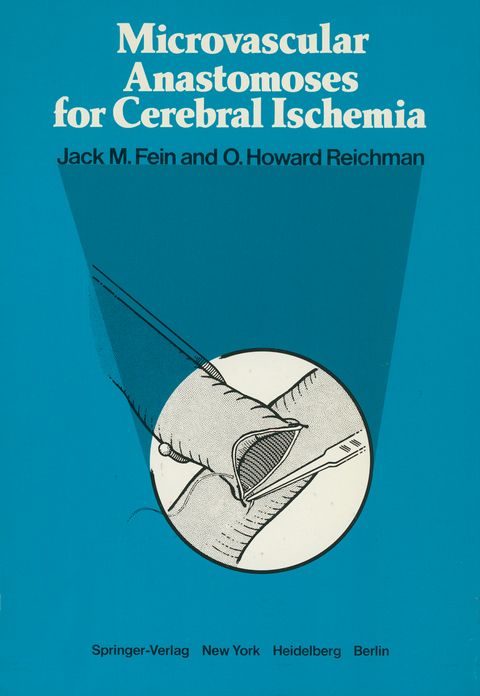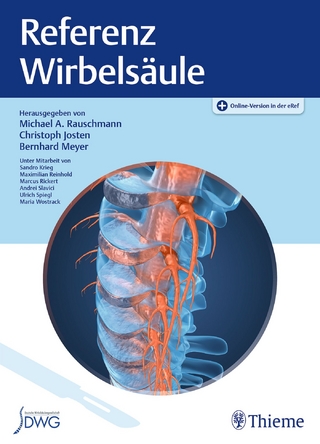
Microvascular Anastomoses for Cerebral Ischemia
Springer-Verlag New York Inc.
978-1-4612-9913-4 (ISBN)
Because of the vesseIs' small size and the doubts regarding its capacity for improving the circulation, the procedure was performed with a certain amount of apprehen- sion. It was a pleasant surprise, therefore, to discover that it was possible to attain a high rate of patency. If the middle cerebral artery was us ed and was isolated from its carotid in- flow, an even higher rate was achieved.
I. Structure and Function.- 1. Anatomy and Physiology Pertinent to Stroke.- 2. Canine Cerebral Ischemia.- 3. Anatomical Studies of the Posterior Circulation Relevant to Occipital Artery Bypass.- 4. Comparison of Blood Flow and Patency in Arterial and Vein Grafts to the Basilar Artery.- 5. The Endothelial Surface of Arteries: A Scanning Electron Microscopic Examination of Normal and Anastomosed Vessels.- 6. The Experimental Effects of Prostaglandin E1 on Small Vessel Patency.- II. Metabolism.- 7. Oxidative Metabolism in Cerebral Ischemia.- 8. Evidence for Barbiturate Protection in Focal Cerebral Ischemia: A Hypothesis for Mechanism and Clinical Utility.- 9. Transient Ischemic Attacks and Metabolic Aspects of Their Relief by Microneurosurgical Anastomosis.- III. Clinical Evaluation and Diagnosis.- 10. Management of Risk Factors and Other Diseases in Candidates for Microneurosurgical Anastomosis in Cerebral Ischemia.- 11. Ocular Plethysmography and Suction Ophthalmo-dynamometry in the Diagnosis of Carotid Occlusive Disease.- 12. Collateral Circulation of the Brain.- 13. Angiographic Cerebral Blood Flow Patterns in STA-MCA Anastomosis Candidates.- IV. Surgical Techniques.- 14. Contemporary Techniques of Cerebral Revascularization.- 15. External Carotid-Middle Cerebral Artery Bypass Using Free Graft Bypass.- 16. Electromagnetic Blood Flowmetry in Microvascular Anastomosis.- 17. Brain Vascularization by Transplanted Omentum.- V. Clinical-Hemodynamic Considerations.- 18. Augmentation of Collateral Hemispheric Blood Pressure following Superficial Temporal to Middle Cerebral Artery Anastomosis: Documentation by Ocular Plethysmography.- 19. Regional Cerebral Blood Flow Studies following Superficial Temporal-Middle Cerebral Artery Anastomosis.- 20. Current Status of Regional Cerebral Blood Flow Measurement in Revascularization Microsurgery of the Brain.- 21. Estimation of Flow Through STA Bypass Graft.- 22. Cerebral Blood Flow in Stroke-Type Patients.- VI. Clinical Results.- 23. Progression of Middle Cerebral Artery Stenosis to Occlusion Without Symptoms following Superficial Temporary Artery Bypass: Case Report.- 24. Experiences with the STA-Cortical MCA Anastomosis in 46 Cases.- 25. Clinical Experiences with STA-MCA Anastomosis in 54 Cases.- 26. Microneurosurgical Arterial Anastomoses in Patients with Prolonged Reversible Ischemic Neurological Deficits (PRIND).- 27. Review of Experience with 50 Consecutive Cases of Superficial Temporal Artery to Middle Cerebral Artery Anastomosis for Treatment of Cerebrovascular Occlusive Disease.- VII. Other Applications.- 28. Microvascular Anastomosis and Carotid Artery Ligation for Fibromuscular Hyperplasia and Carotid Artery Aneurysm.
| Zusatzinfo | XVI, 324 p. |
|---|---|
| Verlagsort | New York, NY |
| Sprache | englisch |
| Maße | 210 x 280 mm |
| Themenwelt | Medizinische Fachgebiete ► Chirurgie ► Neurochirurgie |
| Medizin / Pharmazie ► Medizinische Fachgebiete ► Neurologie | |
| Schlagworte | Hirnchirurgische Anastomose • Hirndurchblutungsstörung • Ischemia |
| ISBN-10 | 1-4612-9913-6 / 1461299136 |
| ISBN-13 | 978-1-4612-9913-4 / 9781461299134 |
| Zustand | Neuware |
| Informationen gemäß Produktsicherheitsverordnung (GPSR) | |
| Haben Sie eine Frage zum Produkt? |
aus dem Bereich


